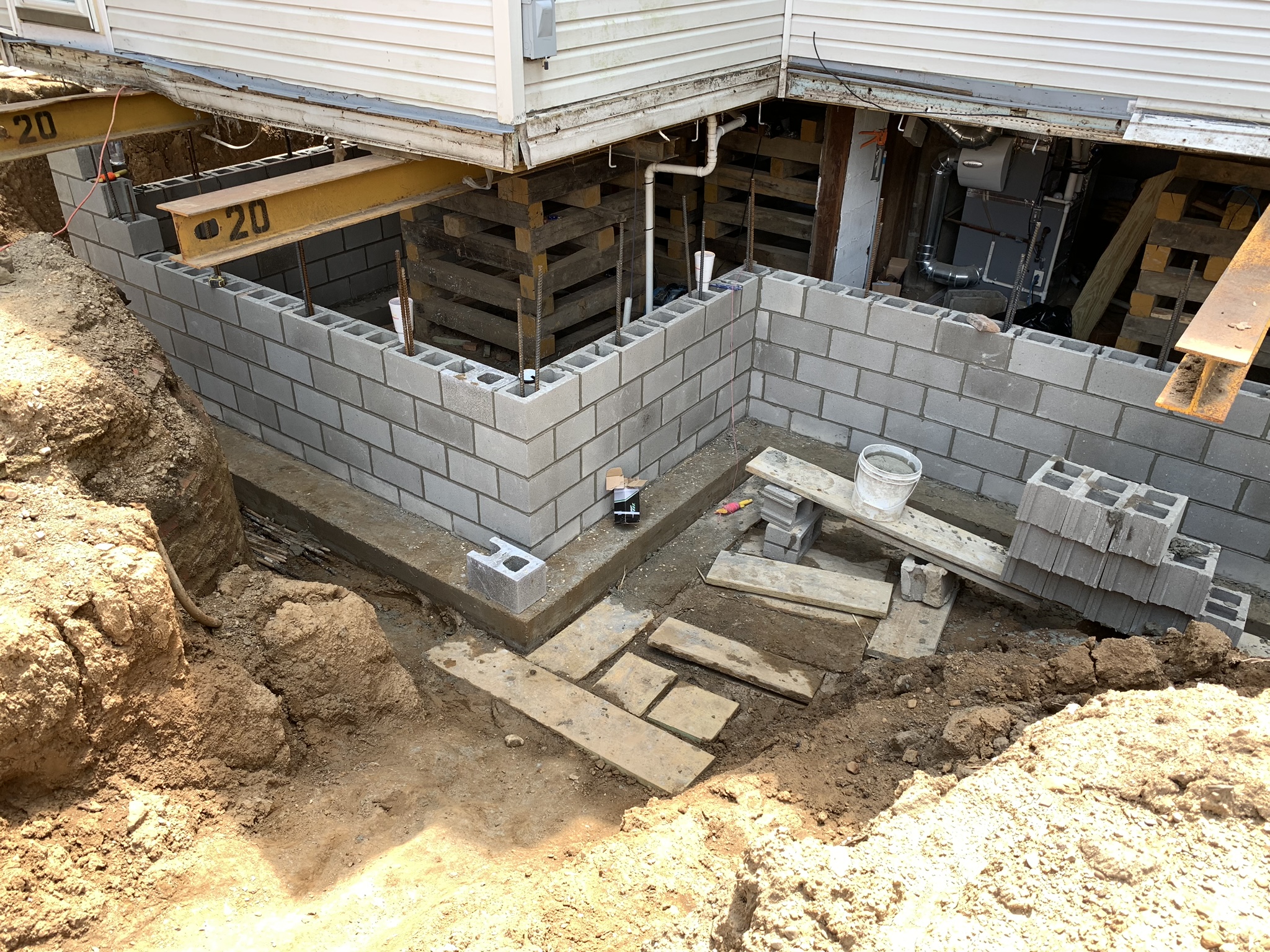Foundation repair is not a one-size-fits-all solution. The ideal approach for your home depends on various factors, including the type and severity of damage, soil conditions, and your budget. In this blog, we’ll explore some of the most common foundation repair methods and the factors to consider when choosing the right one for your home.
Common Foundation Repair Methods
- Carbon Fiber Straps (CFRP): These lightweight, high-strength straps are adhered to the interior of basement walls to reinforce them against bowing or cracking. They are minimally invasive and offer a long-term solution for stabilizing walls.
- Steel I-Beams: Steel I-beams are used to provide additional support to load-bearing walls and prevent further bowing or collapse. While effective, they can be more intrusive and require additional finishing work.
- Push Piers/Micropiles: These steel piers are driven deep into the ground until they reach stable soil or bedrock. They are used to lift and stabilize foundations that have settled or sunk.
- Helical Piers: These piers have helical-shaped plates that screw into the ground, providing support to the foundation. They are often used in areas with expansive soils or where access is limited.
Factors to Consider When Choosing a Repair Method
- Type and Severity of Damage: The repair method should address the specific type of damage your foundation is experiencing. For example, bowing walls might require carbon fiber straps or steel beams, while a sinking foundation might need push piers or helical piers.
- Soil Conditions: The type and stability of the soil beneath your home play a role in selecting the appropriate repair method. Expansive soils might require piers that reach deeper into the ground for stability.
- Accessibility: The location and accessibility of the damaged area can influence the choice of repair method. Some methods, like carbon fiber straps, are less invasive and require minimal excavation.
- Budget: Foundation repair costs can vary depending on the chosen method. It’s essential to consider your budget and discuss cost-effective options with your contractor.
- Aesthetics: Some repair methods, like steel beams, might be more visible than others. If aesthetics are a concern, choose a less intrusive method like carbon fiber straps.
The Importance of a Third-Party Structural Engineer
While contractors can provide valuable insights, it’s crucial to consult a third-party structural engineer for an unbiased assessment of your foundation problems and recommendations for the most appropriate repair method. An engineer can analyze the specific conditions of your home and design a repair plan that meets your needs and budget.
Basement Remedy: Your Partner in Foundation Repair
At Basement Remedy, we prioritize working with third-party structural engineers to ensure that your foundation repair is done right the first time. We’ll guide you through the entire process, from inspection to repair, and provide transparent communication and expert craftsmanship.
Key Points
- Several foundation repair methods are available, each suited for different types of damage and soil conditions.
- Consider factors like the severity of damage, soil conditions, accessibility, budget, and aesthetics when choosing a repair method.
- A third-party structural engineer provides an unbiased assessment and ensures the most appropriate repair solution.
- Basement Remedy works with trusted engineers to provide comprehensive foundation repair services tailored to your home’s needs.
Contact Us Today!
Facing foundation problems? Contact Basement Remedy today for a free inspection and estimate. We’ll work with you and a qualified engineer to develop a customized repair plan that restores the stability and value of your home.




Leave a Reply